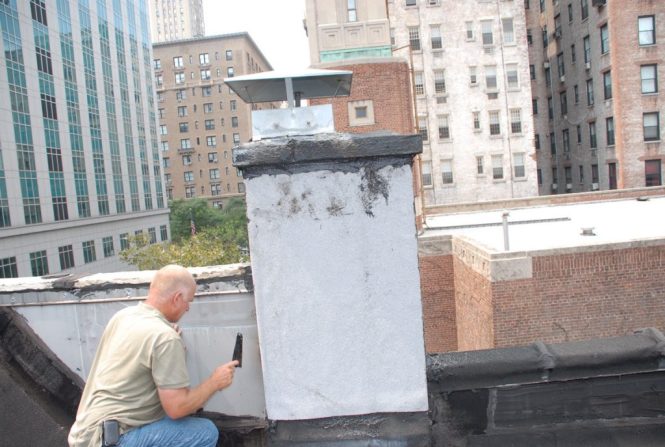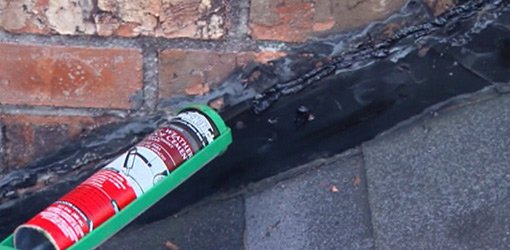

Repairing chimney roof leaks is a crucial home maintenance task. A leaky chimney roof can lead to significant water damage, impacting the structural integrity and aesthetic appeal of your property. Understanding the causes and implementing effective repair strategies can prevent long-term problems and save you money. This guide provides a comprehensive overview of repairing chimney roof leaks, highlighting common causes, troubleshooting steps, and expert advice. We’ll delve into the importance of proper diagnosis, suitable materials, and professional considerations, outlining a clear step-by-step approach. This article will cover everything from identifying the source of the leak to implementing lasting solutions.
Understanding the Causes of Chimney Roof Leaks
Identifying the Source of the Problem
Chimney roof leaks often stem from compromised flashing, damaged or missing shingles, and faulty chimney caps. Poor installation or aging materials can contribute significantly to these issues. Addressing the root cause is paramount to ensuring a lasting repair.
Common Causes of Leaks
- Damaged or missing shingles around the chimney area
- Improperly installed or deteriorated flashing
- Faulty chimney caps, allowing rainwater infiltration
- Condensation issues within the chimney
- Poor ventilation systems affecting the roof around the chimney
Diagnosing Chimney Roof Leaks
Visual Inspection & Leak Detection
Begin by thoroughly inspecting the area around the chimney for visible signs of water damage. Look for wet spots, stains, or discoloration on the roof, walls, or interior ceilings. Pay close attention to the flashing, which is the metal or waterproof material that directs water away from the chimney. A moisture meter can help pinpoint the exact location and extent of the leak.
Checking Flashing & Gutters
Inspect the flashing for any signs of damage, such as cracks, gaps, or rust. Ensure gutters are correctly installed and clear of debris. Blocked gutters can redirect water towards the chimney, exacerbating the problem.
Fixing Chimney Roof Leaks
Replacing Damaged Flashing
Replacing damaged flashing is a crucial step. Choose high-quality flashing materials that are designed to withstand weather conditions and prevent future leaks. Ensure proper installation and secure all seams to create a watertight barrier. A detailed guide on correct flashing installation is essential here.
Repairing Damaged Shingles
Damaged shingles around the chimney need prompt attention. Replace damaged shingles and ensure they are properly fitted to avoid further leaks. Using the correct shingle type is important for longevity and effectiveness.
Installing a New Chimney Cap
Consider installing a new chimney cap if the current one is faulty or damaged. A well-fitted chimney cap is an important part of preventing water penetration. Ensure it is appropriately sized and installed to create a watertight seal.
DIY vs. Professional Repair
DIY Repair Considerations
Consider your skill level and experience when deciding between DIY and professional repair. While DIY repair can save money, it may not always be the most efficient or effective approach. A mistake in installation can worsen the problem.
Professional Repair Expertise
Professional chimney repair services often have the specialized tools and experience needed to handle complex issues. They can provide a thorough inspection and offer the correct solutions for any issues identified.
Preventative Maintenance for Chimney Roof Leaks
Regular Inspections
Regular inspections of the chimney and roof area can help identify and address potential problems before they escalate into significant leaks. Professional inspections are recommended annually or after significant weather events.
Maintenance Schedules
Develop a regular maintenance schedule to address chimney and roof upkeep. This includes tasks like gutter cleaning, shingle replacement, and flashing inspections.
Cost Considerations for Chimney Roof Leak Repair
Material Costs
The cost of materials for repairs will vary based on the extent of the damage and the type of materials needed. Costs associated with damaged flashing, shingles, and chimney caps will vary.
Labor Costs
Professional labor costs can also be significant. Hiring qualified professionals for inspection and repair can lead to more expensive solutions.
Safety Precautions During Chimney Roof Repair
Fall Protection
If working at heights, always prioritize safety by using appropriate fall protection equipment. Avoid using makeshift solutions and always adhere to safety standards.
Working Tools
Ensure all the necessary tools for roof repairs are in good condition and properly used. Check and calibrate them prior to use. Always exercise care when operating tools on rooftops.
Common Questions
What are some common causes of chimney leaks?
FAQ
How much does it cost to repair a chimney roof leak?
The cost of repairing a chimney roof leak varies considerably depending on the severity of the damage, the extent of the repair needed, and the location. Factors such as the required materials, labor costs, and the complexity of the repair all contribute to the final cost. It’s crucial to obtain multiple quotes from reputable contractors to get an accurate estimate before initiating repairs. A simple leak may only require a few hours of labor and some materials, but complex issues, like significant flashing damage or extensive roof damage, can quickly lead to more substantial repair costs.
What are the signs of a leaky chimney roof?
Signs of a leaky chimney roof include wet spots or stains on the roof, walls, or interior ceilings around the chimney area. You might also notice discoloration or sagging shingles near the chimney. Water dripping from the chimney or noticeable dampness in the attic or walls above the chimney can also indicate a problem. Checking for mold or mildew growth in these areas is also a sign of potential water damage. Taking immediate action upon noticing these signs is vital to prevent further water damage and structural problems.
Can I repair a chimney roof leak myself?
While simple cases like replacing a damaged chimney cap might be manageable for a DIY enthusiast, more complex repairs, especially those involving significant flashing or structural issues, are best left to qualified professionals. Attempting repairs yourself without the necessary expertise or tools could lead to further damage and a more expensive repair down the road. A professional can ensure a thorough inspection, accurate diagnosis, and a properly executed repair, minimizing the risk of reoccurring leaks and maximizing the longevity of the repair.
What are the long-term effects of a leaky chimney roof?
Left unaddressed, a leaky chimney roof can lead to severe water damage, impacting the structural integrity of your home. Water intrusion can cause rotting wood, mold growth, and potentially damage insulation and electrical wiring. These issues can lead to costly repairs and potentially even structural problems if not addressed promptly. In addition to these structural concerns, a leaky chimney roof can also negatively affect the home’s aesthetic appeal, reducing its overall value. By addressing chimney leaks promptly, homeowners can avoid significant long-term damage to their property and maintain its value and structural integrity.
In conclusion, repairing chimney roof leaks requires a systematic approach encompassing proper diagnosis, material selection, and skilled execution. By following the steps outlined in this article, homeowners can effectively address chimney roof leaks, ensuring the structural integrity and longevity of their homes. Contact a qualified professional for a comprehensive assessment if you are unsure about any aspect of the repair process. Don’t delay; addressing chimney roof leaks promptly is crucial for preventing further damage and costly repairs.